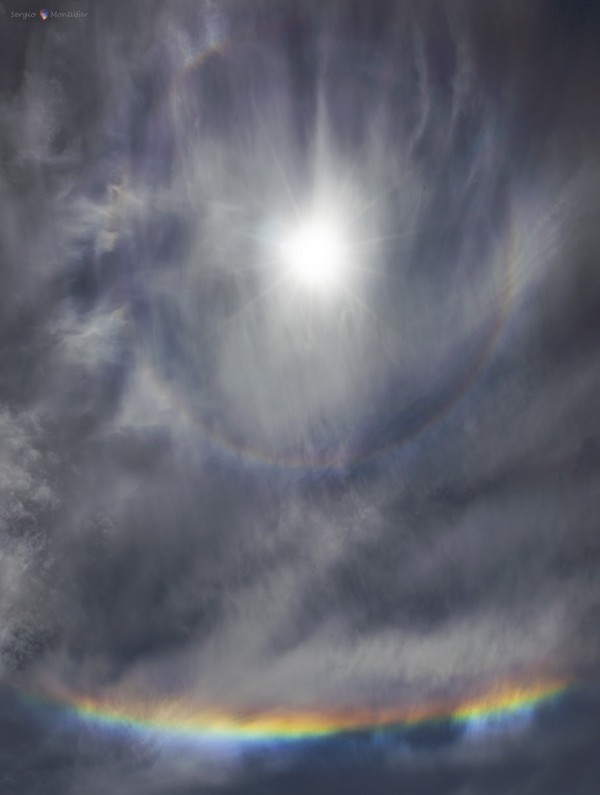
Sergio Emilio Montúfar Codoñer sent in these wonderful images of a circumhorizontal arc, which he captured a few days ago - November 21, 2015 - in La Plata, Argentina. Above the colorful arc is a halo encircling the sun. Read about solar halos and see more photos here.
Both solar halos and circumhorizontal arcs are ice halos. Both are indicate the presence of tiny ice crystals high above our heads, that both refract and reflect light to create these beautiful sky phenomena. At the great website Atmospheric Optics, Les Cowley wrote :
Look for the brightly coloured circumhorizon arc (also a circumhorizontal arc but never 'fire rainbow') when the sun is very high in the sky - higher than 58°. Near to noon in mid-summer is a good time in middle latitudes. The halo is beneath the sun and twice as far from it (two hand spans) as the 22º halo.Thank you, Les and Sergio! See another one of Sergio's photos, taken of the same sky event, below:
It is a very large halo and always parallel to the horizon. Often only fragments are visible where there happen to be cirrus clouds - the individual patches of cirrus are then lit with color that can be mistaken for iridescence.




Reader Comments
to our Newsletter